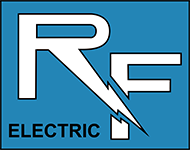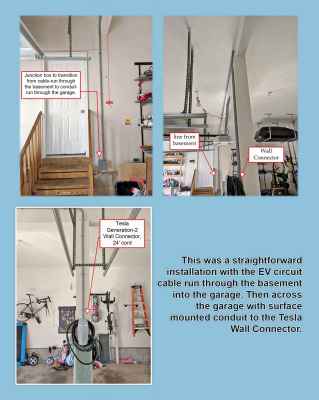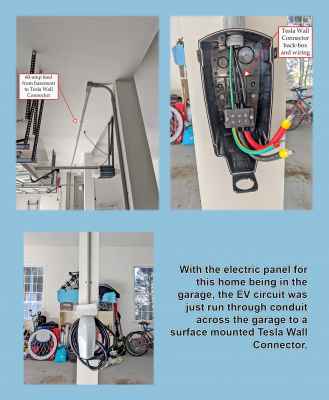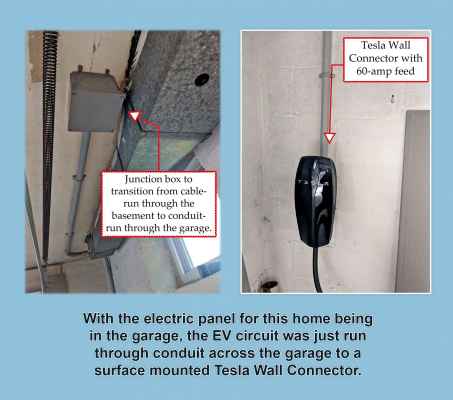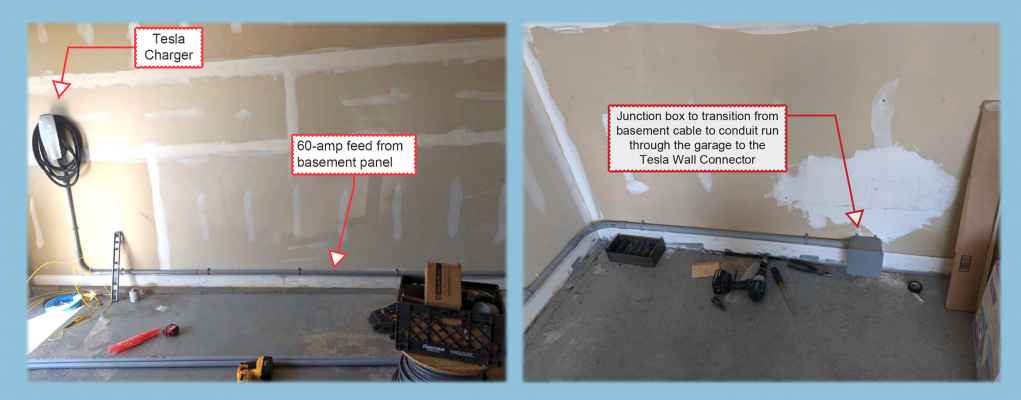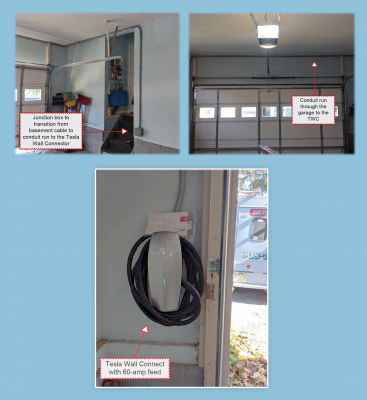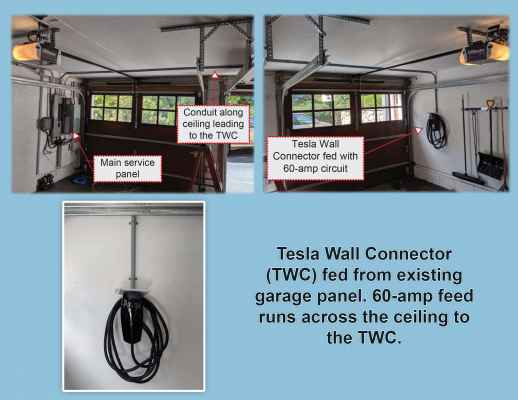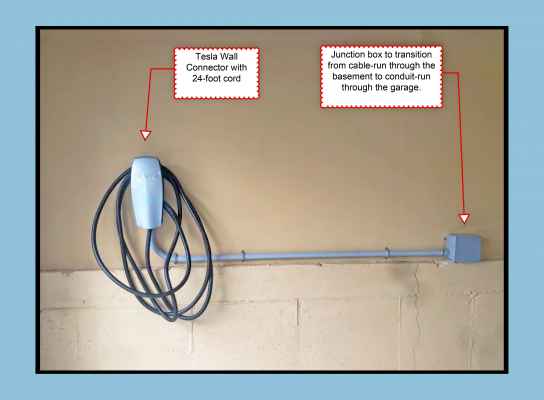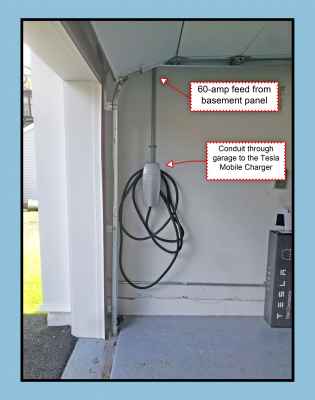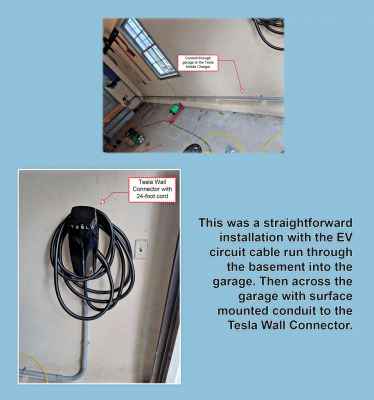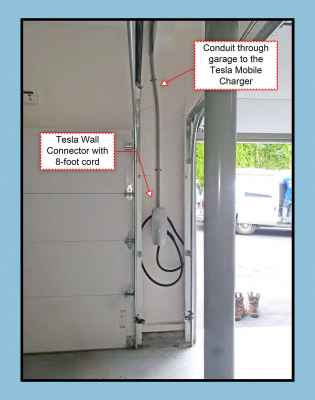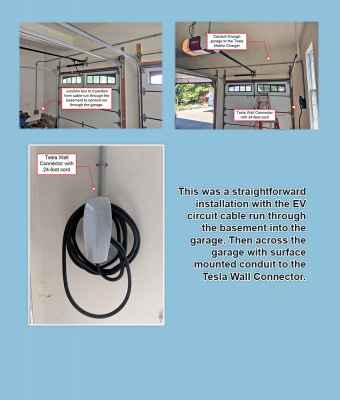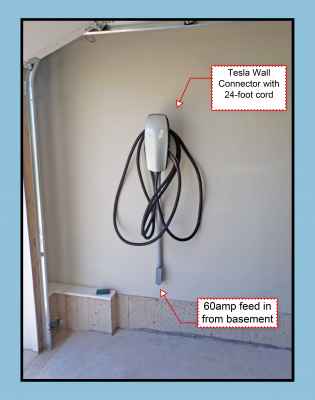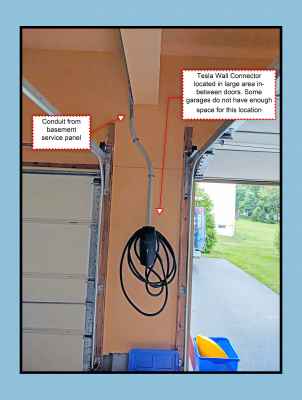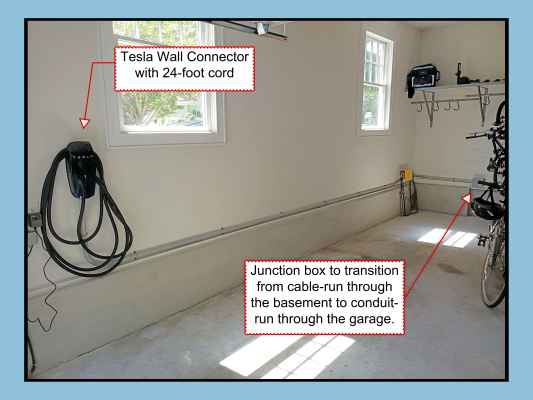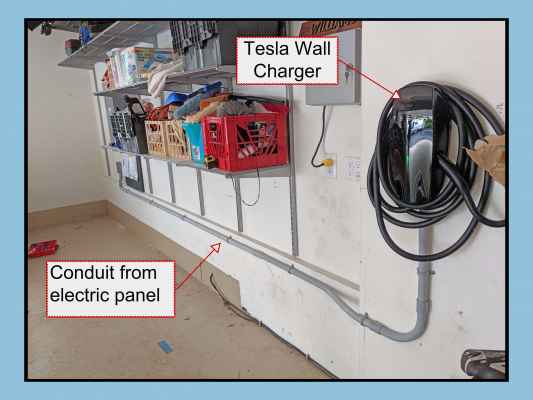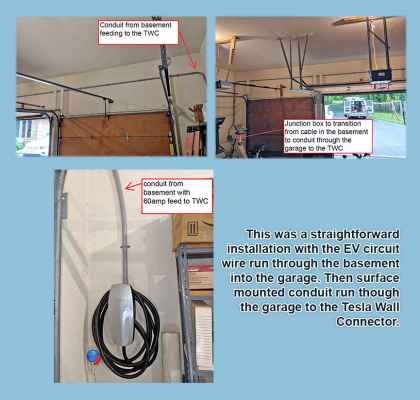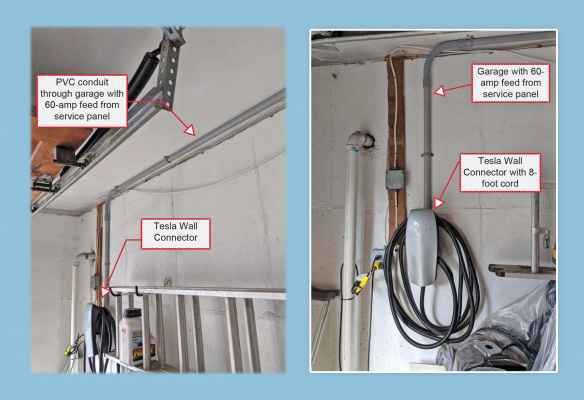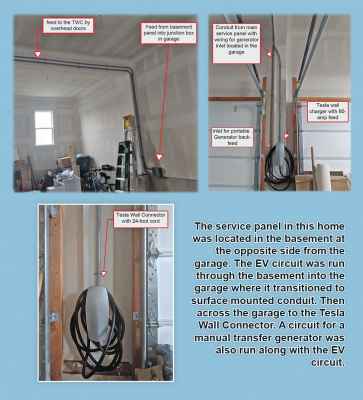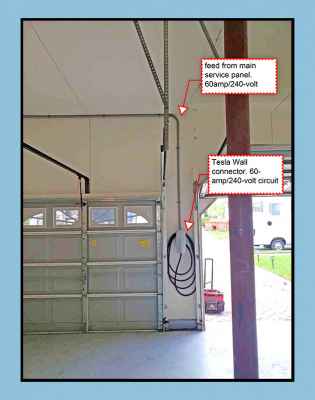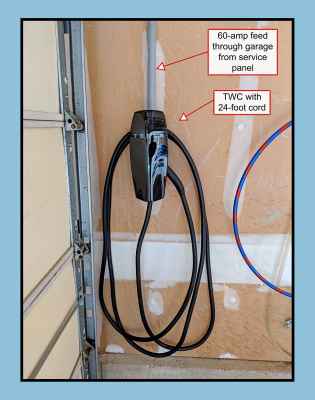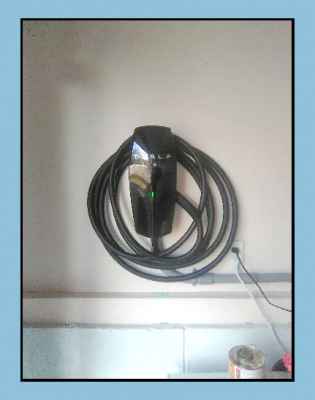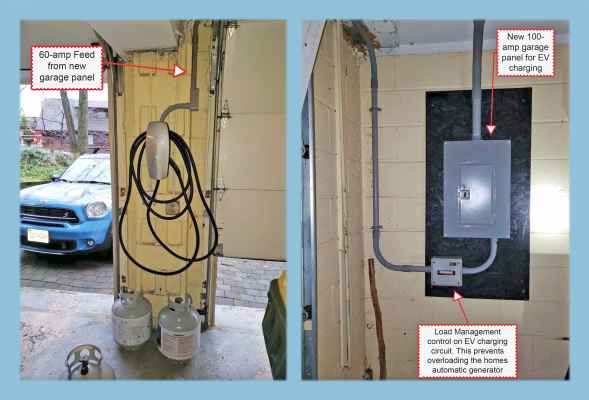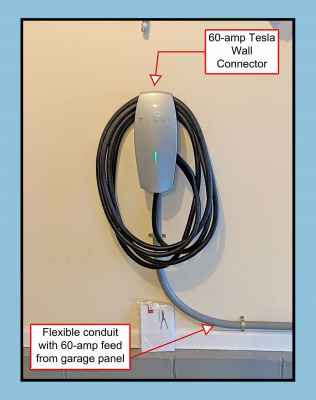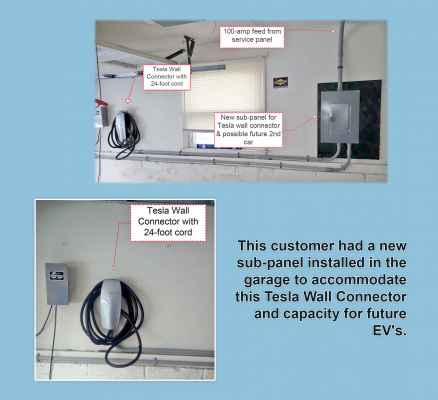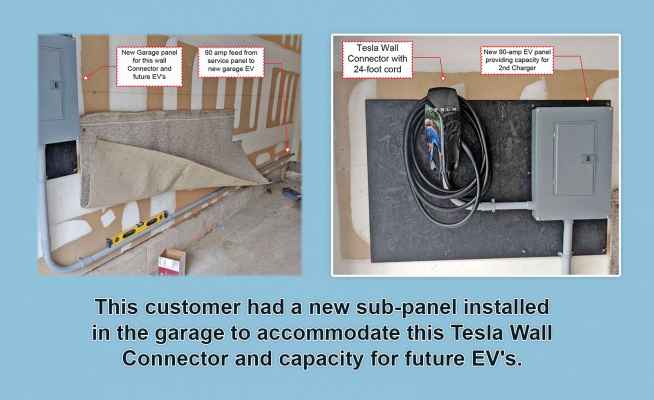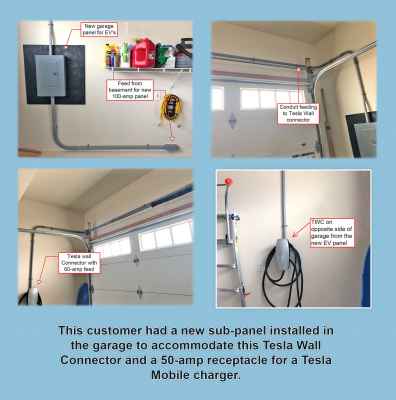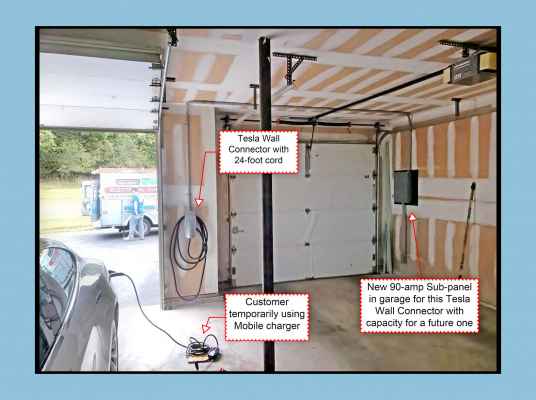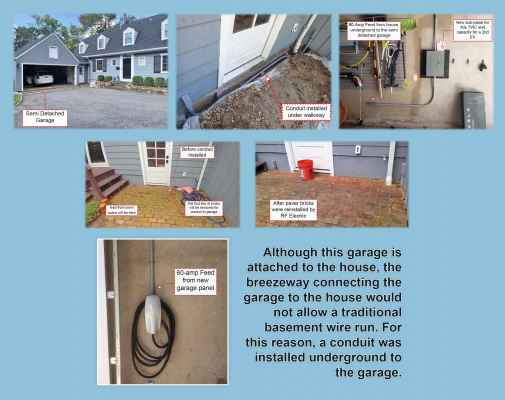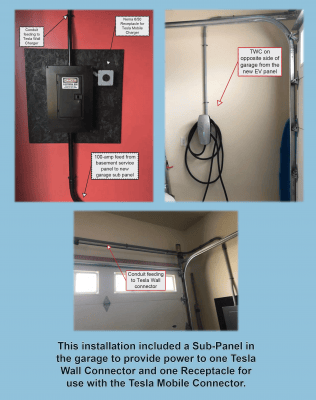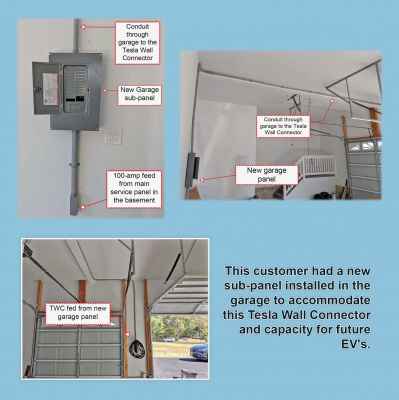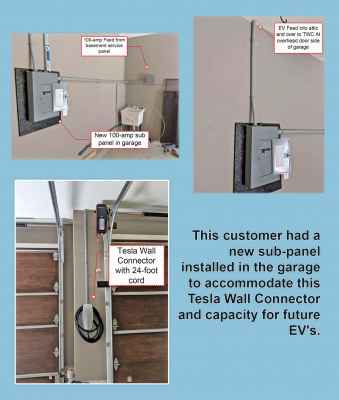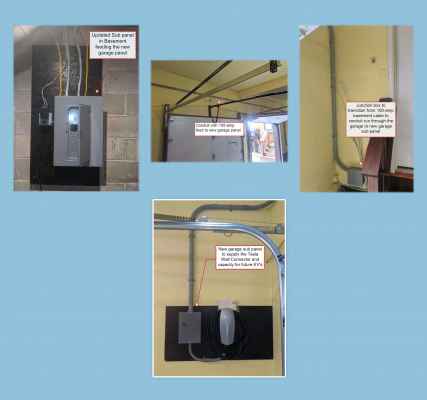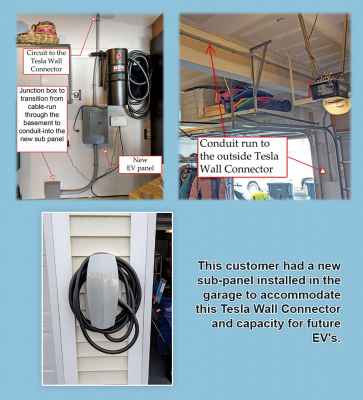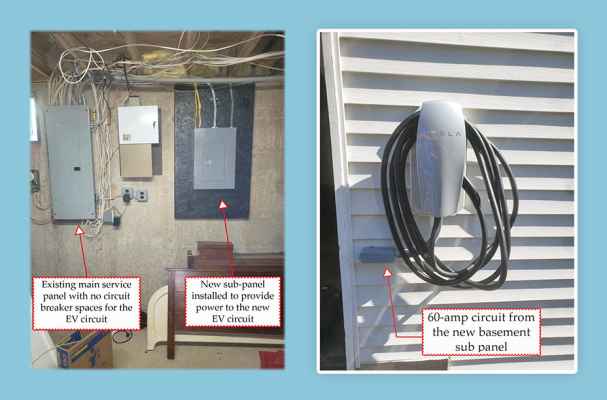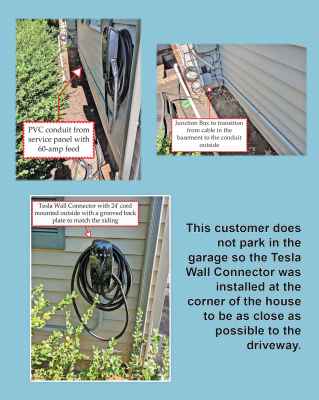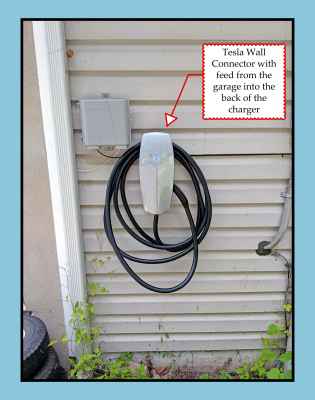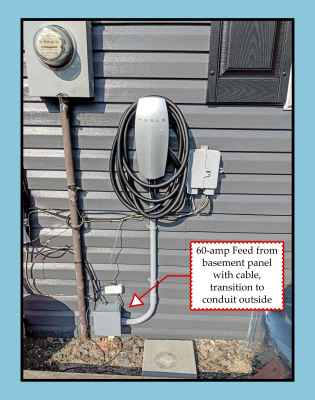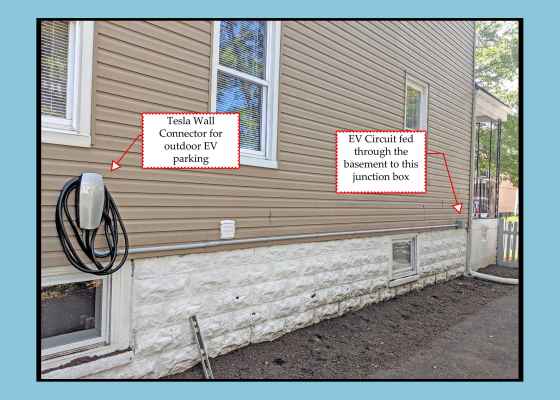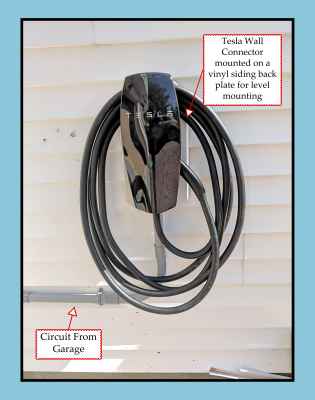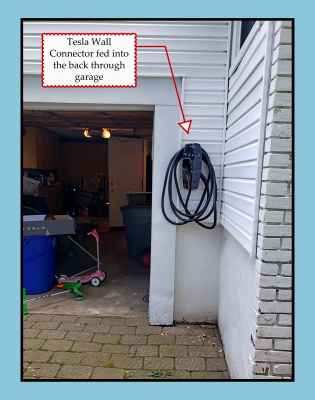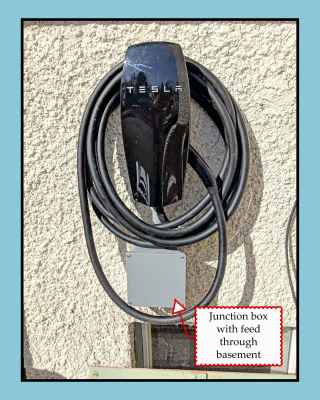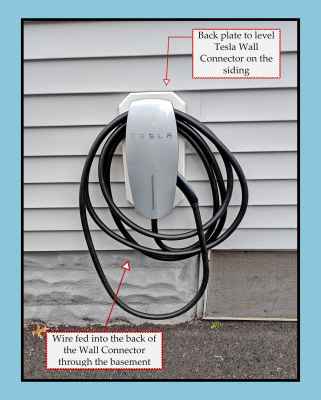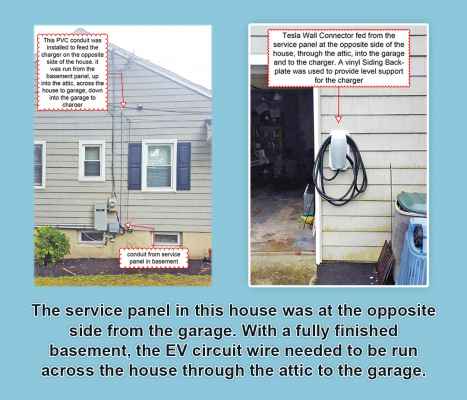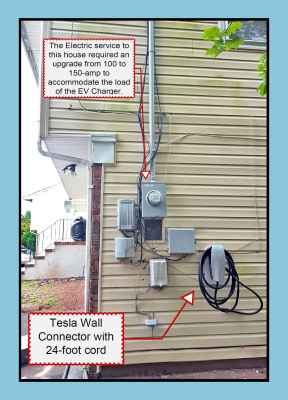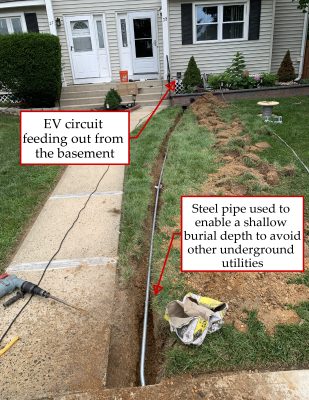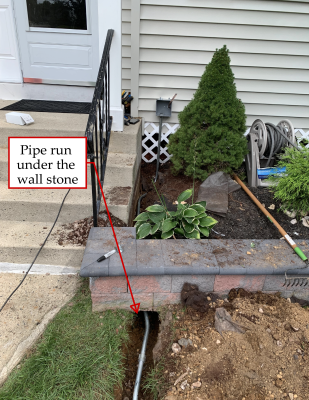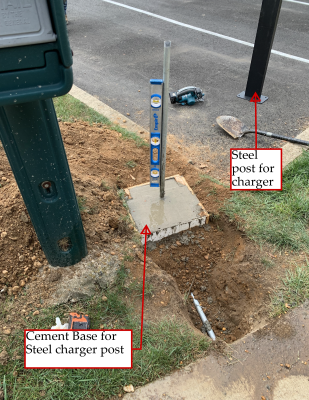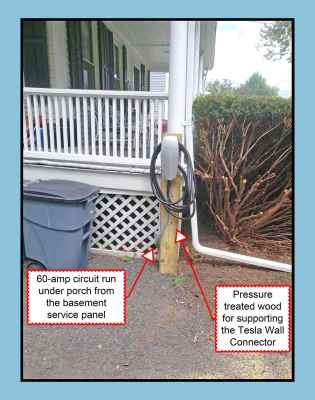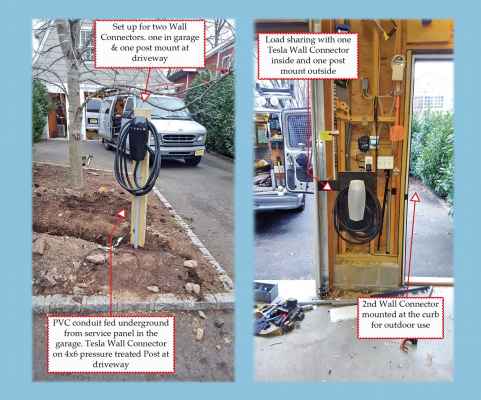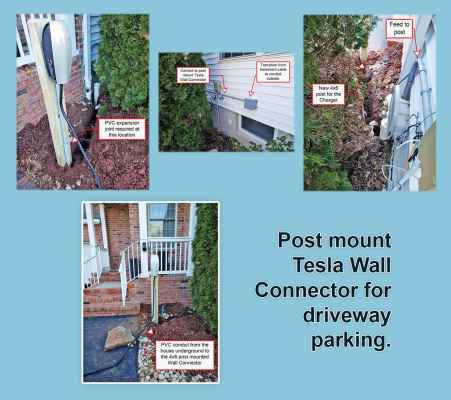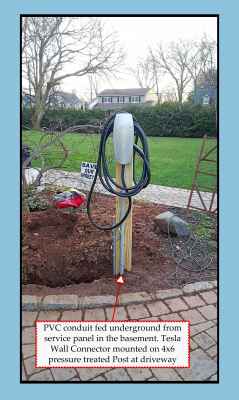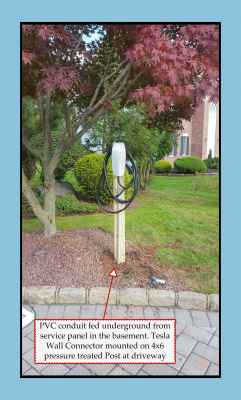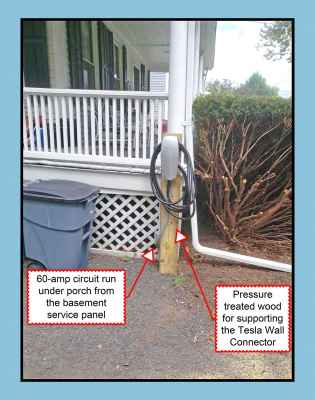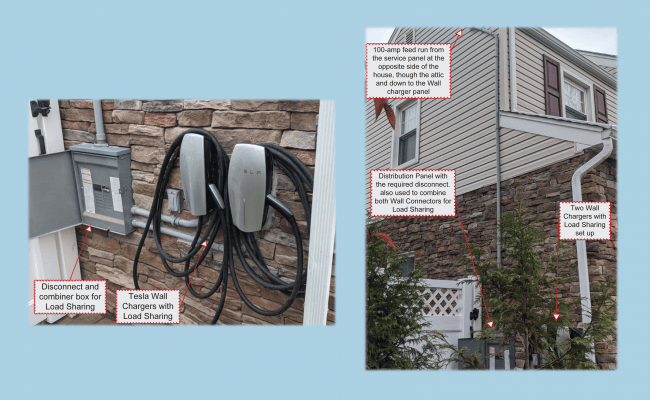Single-family Wall-Connector Installations by RF-Electric LLC
Hard-wired wall connectors provide the fastest level-2 charging available. These chargers are hard-wired to a 60-amp / 240-volt circuit, fed from the Main Service Panel. A typical Wall-Connector installation will charge at 11.5-kw, which is the maximum recharge rate for most Electric Vehicles.
ATTACHED GARAGE INSTALLATIONS
a. Wall connectors fed from a basement panel
When the electrical service panel is in the basement, the circuit runs from the panel through the basement into the garage. Then, usually extended with a conduit through the garage to the charger location. With an unfinished basement, these installations are relatively straightforward. When the basement is finished, the installation can be more challenging, especially when the ceiling is finished with sheet rock. In those cases, the wire is fished, run through unfinished areas, and ductwork chases. The installation of access panels is also often required to access the garage.
b. Wall connectors next to the garage panel
These installations are typical when the electrical service panel is in the garage with the EV parked adjacent to it. For some installations, we remove a section of the wallboard to run the cable through the wall for a cleaner look. The wallboard is then reinstalled and patched. For larger garages with the EV parked further from the panel, a conduit is generally run from the panel to that location.
c. Wall connectors fed from a garage panel
These installations are typical when the electrical service panel is in the garage, and the EV will be parked on the opposite side of the garage. This usually requires a surface-mounted conduit run from the panel to the wall connector location.
d. Wall connectors fed from a new garage sub-panel
When the Main Service Panel is in the basement, and a customer wants to install a charger in the garage and future-proof for a possible additional electric vehicle, one solution is to install a 100-amp sub-panel in the garage. This setup will provide the power for the 1stWall-Connector and provide capacity for adding a second one in the future.
OUTDOOR INSTALLATIONS
Outdoor wall-mounted, wall connectors
Hard-wired wall connectors are waterproof and can be installed outdoors for owners without garage parking. Each installation is unique and requires careful thought as to the best location for the charger. With a driveway directly adjacent to the house, the charger is generally mounted on the house wall. Other installations where the driveway is not next to the house may require trenching to the parking location with a post-mounted Wall Connector.
Outdoor post-mounted, wall connectors
Some single-family residences have unique parking locations where it is not viable to mount the Wall-Connector on the house or garage. These often require the Wall-Connector to be located away from the house, on a post adjacent to the driveway. This requires a trench from the house to the parking location with a post-mounted Wall Connector.
DETACHED GARAGE INSTALLATIONS
The existing wiring to most detached garages is adequate for general lighting and 120-volt outlets. Powering up an EV needs quite a bit more power than this. When a detached garage has no power or only basic 120-volt power, we usually install a 100-amp feed underground or overhead to the garage. A sub-panel is then installed in the garage, which will feed the charger and re-feed the existing general lights and receptacles. These installations generally require a site visit to determine whether an underground or overhead method is best for the field conditions.
UNIQUE CABLE RUN INSTALLATIONS
Some homes, such as bi-levels, split-levels, or homes without a basement, may not have a straightforward way to run a cable from the Main Service Panel to a Wall-Connector. These situations often require partially running the cable through attic spaces or outdoor overhangs, as shown below.
- Cable runs through the attic
This usually requires installing the cable through a conduit on the outside of a house into the attic space, then through the attic to the garage side of the house to the charger.
- Cable runs through an outdoor soffit/overhang
The need for this type of installation is often found in a split-level type of house. This usually requires installing the cable through a conduit outside the house into a front porch soffit/overhang space, then across to the garage side of the house to the charger.
HIGH-CAPACITY WALL-CONNECTORS
A typical Wall-Connector installation will charge at 11.5-kw, which is the maximum recharge rate for most Electric Vehicles. However, Electric Vehicles, such as the Ford Lightning, and older Tesla Model-S cars can charge at 19.5-kw when set up with a special high-capacity charger. However, RF-Electric generally does not recommend these since standard 11.5-kw charging is adequate for Overnight home charging.
